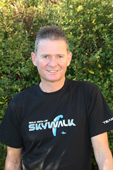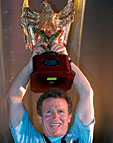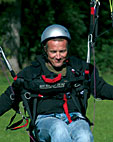Welcome to the world of thermal flying
I was hooked on paragliding from the first flight, many years ago. Right from the first little hop into the air I knew that this was “it” for me. In the following years I flew as much as I possibly could as a full-time employed engineer – which was far too little for my taste. My idols were the club colleagues who had already been flying for two long years – I felt like they were untouchable in their skills.
To improve as quickly as possible I read everything I could lay my hands on, every book and every magazine. Manfred Kreipl’s “Das Thermikhandbuch”, although hard to read, became my most trusted friend. The book had no pictures and only a few drawings, and I had to read many passages over and over to understand everything.
I also read all the theoretical material that we were issued for our exams. Most of this was fortunately much easier to read. My favourite texts concerned the practicalities of flying; thermals, weather, trigger points, centring technique, valley winds (wind systems) – I devoured it all. Things like aviation law, navigation, aerodynamics and equipment knowledge also had to be learned for the test, but my heart was with the other subjects.
I wrote this book for all the pilots out there who feel just like I felt back then. It is about all the things that I, and many of my fellow students, found so intriguing when we first entered this wonderful world of free flying.
If something like this book had been available back then I truly think I could have sold a copy to each and every student in the class. But there are so many little hints and tricks in it that even old thermal hogs should be able to find some nuggets here and there.
What really caught me about flying is the playing in and with nature. We have all learned through our flying education how warm air will eventually rise as a thermal, but to actually find this rising air and use it to go right up to cloud base is simply addictive. To combine more thermals in one flight, to fly to the next expected trigger point and actually find lift, then use this lift to go further still; this is in my mind truly awe-inspiring. Whenever this happens, when my theories prove themselves in real life I feel particularly alive and fortunate. So gliding towards a specific point on a hill and actually finding lift there is exhilarating every time. What it does for me is to prove that my understanding of nature is continually improving.
The other aspect of this game is the natural impressions gathered through a flight. Sometimes we’re thermalling with raptors, sometimes flying over a flock of browsing geese. And almost all the time we’re enjoying spectacular views from a perspective that most people can only dream of. When flying over the Dolomites in the Italian Alps I can see the majestic main Alpine divide, an almost uninterrupted snow-covered ridge from horizon to horizon. Does anything really compare to this?
This book does not replace good intuition from experienced professionals. The first thermal experience should be gathered under supervision of a flight school, as strong thermals are not to trifle with.
The book is written from a paraglider pilot perspective, but all but a very few minor details may be directly applied to hang gliding as well. Descriptions of landscape-defined particularities like valley winds or the development of the average thermal strength during the day all refer to the Alpine region, from France to Slovenia, but may be applied to all mountainous regions. Whenever I’m referring to flatland regions this is always clearly stated.
Once you have mastered thermal flying the jump to cross country flying is relatively easy. I wish all fellow pilots all over the world lots of beautiful and exciting flights.
Burkhard Martens










